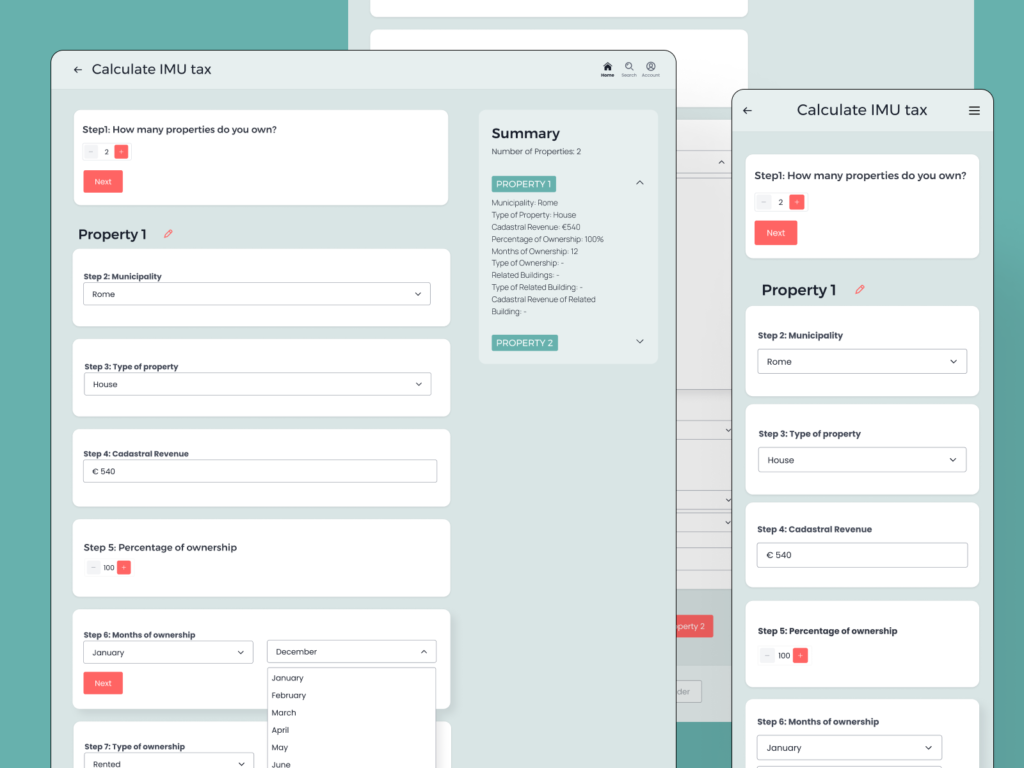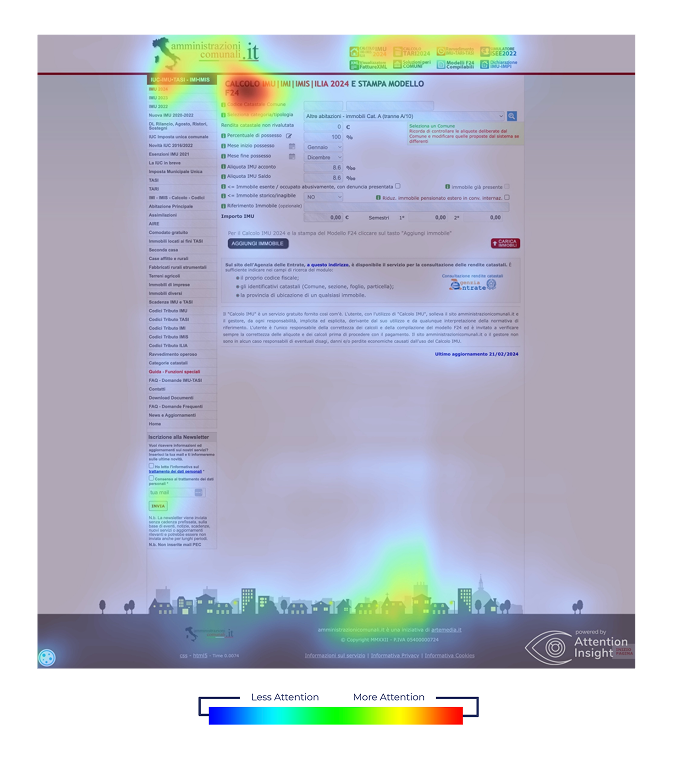Innovating UX/UI Design with Artificial Intelligence: The IMU Tax Case
March 19, 2025
Elena Venieri

In recent years, AI has revolutionised every professional field and the world of UX/UI design is no exception. Today, I tell you how, by integrating artificial intelligence into my workflow, I transformed the creative process and achieved concrete results, starting with the real-life case of an IMU tax calculation tool.
The Challenge: A Complex Tool to Revolutionize
The project presented itself as an interesting challenge: to improve an IMU calculation application, an essential tool to facilitate the calculation of property tax. Although it had some strengths – such as a simple and functional interface – the tool showed shortcomings in terms of usability, clarity of instructions and accessibility. The mission was therefore to redefine the user experience, making it more intuitive and oriented towards the real needs of users.
The AI Approach: Stages, Pros and Cons
The integration of AI made it possible to streamline and enhance every stage of the UX/UI design process. Here’s how:
1. Usability Review and Visual Analysis
What I did:
Using tools such as Google Gemini and Attention Insights, I conducted a quick analysis of the tool’s usability and visual structure. These tools gave me an immediate overview of strengths (e.g. a clear title and minimalist structure) and weaknesses, such as a lack of feedback and user instructions.
Pros:
- Immediate Feedback: AI tools provide detailed reports quickly.
- Fast Criticality Identification: Usability errors and visual hierarchy problems can be identified efficiently.
Cons:
- Superficial Analysis: Evaluations may be too concise if not supplemented with field tests and real user feedback.
- Dependence on Basic Data: Without accurate contextualisation, some issues may be misinterpreted.

2. Interviews and User Testing
What I did:
Through tools such as Hotjar and Dovetail, I conducted structured interviews and collected feedback from various user profiles, from ‘Newcomers’ to professionals. AI helped aggregate and cluster responses, identifying patterns and suggesting areas for improvement.
Pros:
- Synthesis of Feedback: Automated aggregation enables rapid identification of common problems and user needs.
- Diversification of Personas: Detailed user profiles can be defined to better target design solutions.
Cons:
- Lack of Contextualisation: Algorithms may not fully capture emotional or contextual nuances, requiring human review.
- Data Interpretation: AI analysis must always be validated by experts to avoid misleading interpretations.
3. Competitive Analysis
What I did:
The use of AI tools facilitated a quick competitor analysis, comparing the tool with similar solutions on the market. This step helped identify gaps in functionality and opportunities to differentiate the product.
Pros:
- Market Overview: An immediate overview of competitors’ strengths and weaknesses can be obtained.
- Identification of Opportunities: The analysis allows you to identify areas for improvement and new functionalities to be implemented.
Cons:
- Risk of Superficiality: An automatic analysis can be generic and not take into account local or contextual specificities.
- Integration with In-Depth Research: It is necessary to combine AI data with more detailed market research for a comprehensive evaluation.

4. User Flow and Wireframing
What I did:
Using platforms such as Whimsical, Relume and Wire Gen, I generated wireframes and interactive prototypes. These tools allowed me to explore different solutions for the user journey, verifying the effectiveness of the flows and information architecture in real time.
Pros:
- Speed of Prototyping: Several iterations of the design can be quickly achieved.
- Dynamic Visualisation: Allows interactive testing and validation of the user experience.
Cons:
- Limitations of Pre-built Components: Often, the solutions offered are standardised and require further customisation.
- Need for Manual Intervention: AI supports the process, but human creativity remains indispensable for innovative solutions.

Conclusions
The integration of AI into the UX/UI design process has been a real revelation, an accelerator of ideas and solutions that has given my workflow a boost. Sure, AI is a great ally for analysing, prototyping and gathering feedback, but nothing can replace that human touch, that creative ability and the multidisciplinary problem solving of an expert. Human review remains a must to sensitively interpret data and contextualise solutions.
If you are curious to discover how AI can revolutionise your approach to design, I invite you to experiment with these tools and be inspired. The future of UX/UI design is already here, ready to be shaped with creativity, innovation and, of course, that pinch of humanity that makes all the difference!